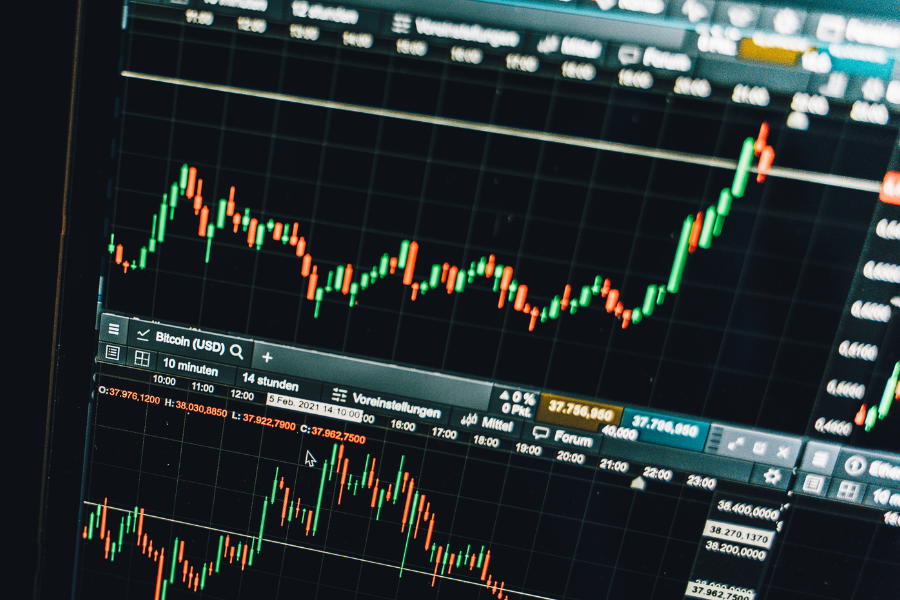The Rise of High-Frequency Trading: What You Need to Know

Strong 8k brings an ultra-HD IPTV experience to your living room and your pocket.
High frequency trading (HFT) has revolutionized the financial markets over the past few decades, emerging as a dominant force in modern trading strategies. This highly sophisticated approach to trading relies on powerful algorithms, lightning-fast data processing, and advanced technology to execute trades at a speed and volume far beyond human capability. In this blog, we’ll explore the rise of high-frequency trading, how it works, and what you need to know to navigate this ever-evolving field.
What is High-Frequency Trading?
High-frequency trading refers to a method of trading that involves executing large numbers of orders at extremely high speeds. Using complex algorithms, HFT systems can analyze market conditions, identify trading opportunities, and place orders in fractions of a second. These trades typically occur within milliseconds, which allows high-frequency traders to capitalize on very small price movements that traditional traders may miss.
The rise of HFT has been largely driven by advances in technology, particularly in computing power, internet speed, and access to real-time market data. Today, HFT is responsible for a significant portion of all trades on major stock exchanges worldwide, including those in the U.S. and Europe.
How High-Frequency Trading Works
At its core, high-frequency trading uses computer algorithms to identify and execute trades based on specific market conditions. These algorithms analyze vast amounts of market data, such as order book data, price movements, and liquidity, to predict and react to micro-market trends.
There are several key components to HFT:
Algorithmic Trading: HFT relies heavily on algorithmic trading strategies that use pre-programmed instructions to make decisions on buying or selling assets.
Latency: The speed at which data is processed is crucial in HFT. Traders invest in infrastructure to reduce latency, allowing them to make decisions faster than competitors.
Co-location: Many high-frequency traders place their servers close to the exchanges' data centers to minimize the delay in executing trades, further increasing the speed advantage.
The Rise of High-Frequency Trading: Why It Became So Popular
The growth of high-frequency trading can be attributed to several factors:
Technological Advancements: Over the years, the development of faster processors, low-latency networks, and sophisticated algorithms has given HFT firms a significant edge over traditional traders.
Market Liquidity: HFT firms contribute significantly to market liquidity by executing a high volume of trades. This liquidity benefits other market participants by ensuring smoother price discovery and reducing bid-ask spreads.
Profitability: The ability to make a profit from minute price changes, combined with high trade volumes, can be highly lucrative for HFT firms. The small margins on each trade are amplified by the volume of trades, leading to substantial profits.
Controversies and Challenges in High-Frequency Trading
While high-frequency trading has undoubtedly transformed the financial landscape, it is not without controversy. Critics argue that HFT can lead to market manipulation, increased volatility, and an unfair advantage for those with the fastest technology. The “flash crash” of 2010, which saw the U.S. stock market plummet within minutes, is often cited as a cautionary tale of the potential dangers of high-frequency trading.
Furthermore, many retail traders feel that HFT gives institutional traders and firms with more resources an unfair advantage in the market, leaving less opportunity for individual investors.
How FundedElite Supports High-Frequency Traders
For aspiring high-frequency traders, joining a funded prop trading firm like FundedElite can provide access to the capital, technology, and resources necessary to compete in this fast-paced arena. FundedElite offers professional trading platforms, access to state-of-the-art tools, and expert guidance for traders looking to engage in high-frequency trading strategies. By leveraging these resources, traders can refine their skills and navigate the complexities of the HFT world with confidence.
Conclusion
The rise of high-frequency trading has reshaped the financial markets in profound ways, creating opportunities for traders who are equipped with the right tools and strategies. While the speed and complexity of HFT can be daunting for many, understanding the mechanics behind it can help traders adapt and thrive. For those looking to dive into this lucrative but competitive field, joining a funded prop trading firm like FundedElite can offer the necessary support to succeed in the world of high-frequency trading.
By leveraging advanced technology, capital, and expert mentorship, FundedElite can help you take your trading career to the next level in this exciting and fast-paced market.
Note: IndiBlogHub features both user-submitted and editorial content. We do not verify third-party contributions. Read our Disclaimer and Privacy Policyfor details.







